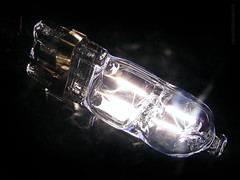For the People By the People: In today's society mainstream media tells the people what they would like them to believe. I for one am not interested in what I am being told to believe. I want to hear what the people think.....
Tuesday, November 30, 2010
Google Adds a Little Magic to Earth (Click for article from Tech News World)
 Image via CrunchBase
Image via CrunchBaseReviews of Googe Earth:
You can put a virtual thumbtack in the map to mark places of note, such as your house or your workplace with detailed labels. You can get driving directions from one point to another. Once the driving directions have been calculated, you can play them back as a virtual tour.
What Do I Need to Run Google Earth?
Platforms:
Google Earth 4(beta) is available for Windows 2000/XP, Mac OS 10.3.9 or higher, and Linux
Versions
There are three main versions, free, Plus, and Pro. Google Earth Plus is only available for Windows users and adds GPS support as well as enhanced drawing and sketching. Google Earth Pro 4 beta is available for Mac or Windows. It is designed for commercial users.
Most users won’t require more than the free version.
The Google Earth Interface
Google Earth opens with a view of the world from space. Clicking and dragging on the planet will gently spin the globe. The middle scroll wheel or right-click dragging will zoom in and out for close-up views. In some areas the close-ups are detailed enough to make out cars and even people.
If you pass over the upper right-hand corner of the globe, the small compass will turn into the larger navigation control. Click and drag the circle to turn the map. North on the compass will move accordingly. Click on the arrows to move left or right, or use the star in the middle as a joystick to move in any direction. The dial to the right controls zoom levels.
Tilted View
You can tilt the globe to have a perspective view and move the horizon line up or down. This lets you view close-ups as if you were just above them, rather than viewing straight down. It also comes in very handy with the 3-D Buildings. This view is best with the Terrain layer turned on.
Layers
Google Earth can provide a lot of information about a location, and if you were to view it all at once, it would just be confusing. To remedy this, the information is stored in layers, which can be turned on or off. Layers include roads, border labels, parks, food, gas, and lodging.
Terrain and 3D buildings
Two layers are useful for creating a more three dimensional globe. Terrain simulates the elevation levels, so when you tilt your view, you can see mountains and other terrain objects. The 3D Buildings layer lets you zoom through cities, such as San Francisco, and fly between buildings. Buildings are only available for a limited number of cities, and they are only available in gray, unshaded shapes (although there is additional textured building info available for download.)
Advanced users can also create and texture their own buildings with Sketchup.
Vendor's Site
Search
The upper right corner lets you search for any address. Most addresses require a state or country, although some larger US cities only require the name. Typing in a full address will zoom you to that address, or at least near it. Most of the residential addresses I tried were at least two houses off.
Bookmarks, Driving Directions, and Tours
Community
Google Earth has developed quite a following. There are several blogs and discussion boards on Google Earth where users share bookmarks, tours, hacks and tips. Google Earth Community is probably the best known of these groups.
Slow Machines Beware
Google Earth is pretty nifty, but at times it runs very slow, particularly on slower computers. As you zoom and move, images may be very blurry and slowly work into focus as new data is loaded.
Image Quality
Google gets the images from satellite photos, which are stitched together to make a larger imaage. The images themselves are of varying quality. Larger cities are usually sharp and in-focus, but more remote areas are often blurry. There are often dark and light patches marking different satellite images, and some of the images are several years old. Images are not labeled with the date the picture was taken.
Accuracy
The image stitching technique sometimes leaves problems with accuracy. Road overlays and other bookmarks often seem like they’ve shifted. In reality, the way the images were stitched together may have made the images shift position slightly. Either way, it is not surgically precise.
The Center of The World
Users outside of the US may find themselves annoyed by the obvious American bias of the globe. The center of the Google Earth when it opens is somewhere in Kansas. The US portions of the map in general have more data, better pictures, and the only cities with 3D buildings. Measurements in Google are set by default to miles and feet, even though almost every other country in the world has switched to the metric system.
Overall
Overall, Google Earth is a lot of fun. Many of the interface elements are being incorporated into Google Maps, so it may not be necessary for every user to download it. It’s fantastic as an educational tool to let children explore the world. It has a fantastic community, and it makes planning road trips fun. If you like taking mini virtual vacations at your desktop, Google Earth is definitely for you.
•Google Earth can be downloaded from the Web at earth.google.com.
Monday, November 29, 2010
Saturday, November 27, 2010
Friday, November 26, 2010
No makeup celebrities
Celebs caught not wearing any makeup. Man those people have some awesome hair and makeup people.
Wednesday, November 24, 2010
Subscribe to:
Comments (Atom)













